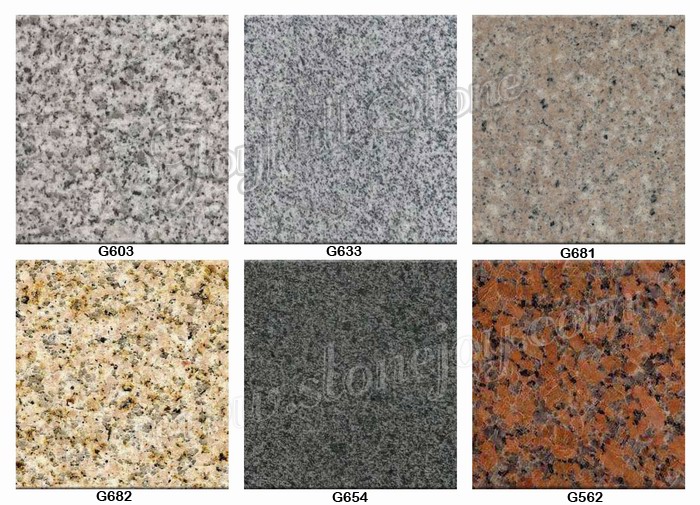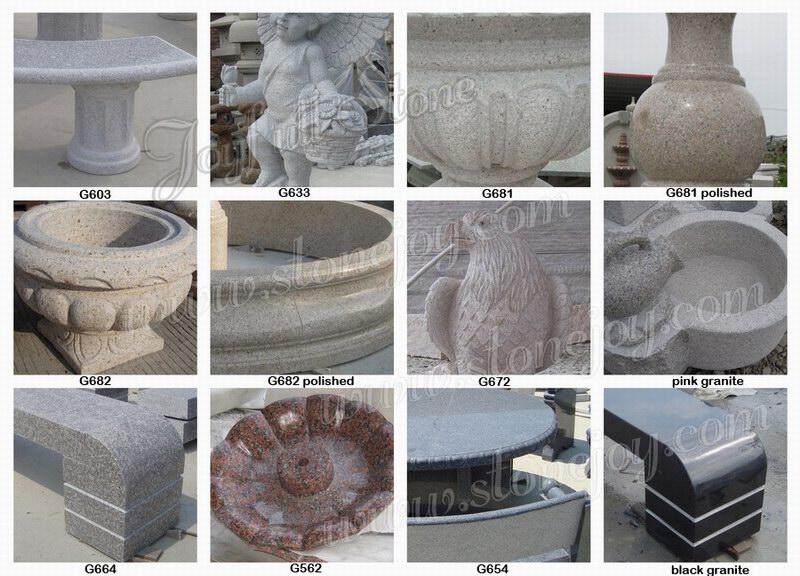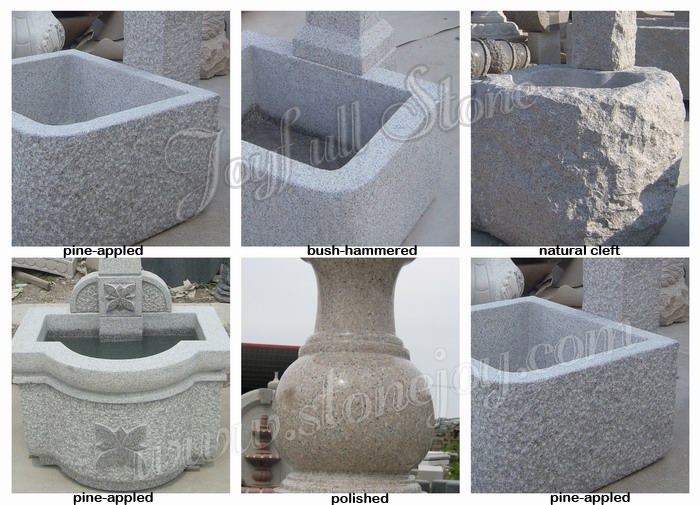


No products
Tel: +86 592 2688669, 2688699
Fax: +86 592 2688698, 2668899
Email:sales@stonejoy.com, stoneshop@gmail.com
MSN:stonehello@hotmail.com
Skype:Joyfullstone
1.What is granite
Granite is an igneous rock, which, during its development, remains in the form of liquid magma in the center of the Earth. Unlike lava, granite did not come to the surface. It remained trapped inside the earth where it slowly cooled and crystallized. Due to the extreme pressure within the Earth, and the absence of atmosphere, granite is formed very dense with no pores. Granite is infact a host of ingredients, including common minerals like feldspar, quartz and mica, and the proportions vary considerably from deposit to deposit. The major mineral component of granite is feldspar. Quartz, which is the hardest part of Granite (it ranges from 70% to 80% the density of a diamond) comprises only between 10-30% of the rock, whereas feldspar (potassium and sodium varieties) makes up 60-80%. (This contrasts dramatically with GRANIREX, which is 93% natural Quartz).
Granite comes in various colors varying from stark white to beiges, browns, reds, pinks, yellows, greens, blues, grays and blacks. Textures range from clear to coarse and crystalline to heavily veined. These natural materials were created in the earth many years ago by processes and conditions, which gave each of them varying properties and characteristics.
Granite is the most durable of the stone surfaces, which makes it the best choice for a worry-free countertop. It is extremely durable, stain resistant and easy to care for. It is chip resistant and is unlikely to crack or scratch during normal use.
Popular granite colour for the carvings, decorations

Finished items

2. What is marble?
Marble is the geological name for massive, compact limestone which has been completely re-crystallized by heat and pressure, capturing many foreign substances, thus creating a unique variety of colors and veining (minerals). Marble is simply changed limestone, or to be more specific, metamorphic limestone. The veining which is caused by dissimilarity of materials, often represents areas of weakness within many marbles. Like numerous other stones such as Calcareous stones, travertine and onyx, Marble is also composed chiefly of calcium carbonate.
Marble can be polished and used for architectural and ornamental purposes. Its color varies from white to black, being sometimes yellow, red, and green. Marble is sometimes beautifully veined or clouded. It is preferred for floorings and accentuates the living sphere with its sheer opulence.
Marble stone is relatively softer than other stones and offers less stain resistance. Thus it requires careful maintenance and should be treated as fine furniture. Marble is susceptible to damage from citric acids, alcohols and oils. Spills should be wiped up immediately. Treated properly, marble will remain elegant for decades.
3.Stone Surface Finishes
There are many different types of stone available today. When stone is ordered, it is fabricated with a particular type of surface. There are six main type of surfaces that are selected:
1) Polished: A glossy surfaces that wears away with time due to heavy foot traffic and using improper maintenance procedure. This surface is very smooth and not porous. The reflectively of polished crystals brings out the brilliant colors and grains of natural stone. The shine comes from the natural reflection of the stone's crystals. The shine is due to polishing bricks and polishing powders used during fabrication. The Shine is not from a coating.
2)Honed: Provides a flat to low sheen gloss. Different levels of gloss can be selected. This surface is very smooth, but often very porous. This texture is common in high traffic buildings. Honed floors should always be protected with Penetrating Sealer because it has wide-open pores. Honed stone colors are not as vibrant as polished stone.
3) Flamed: A rough surface that is developed through heat. During fabrication, the stone is heated up and the crystals begin to pop, thus forming a rough surface. This surface is very porous and must be treated with an impregnator.
4) Sandblasted: This surface is the result of a pressurized flow of sand water that provides a textured surface with a matte gloss.
5) Sawn: A Process performed by using a gang saw.
6) Bush-Hammered: A pounding action that develops a textured surface. The degree of roughness can be selected.

4. Will the stone looks like online sample?
Because stone is a natural product, colour and vein may vary from piece to piece. Each colour shown is a representative sample only.